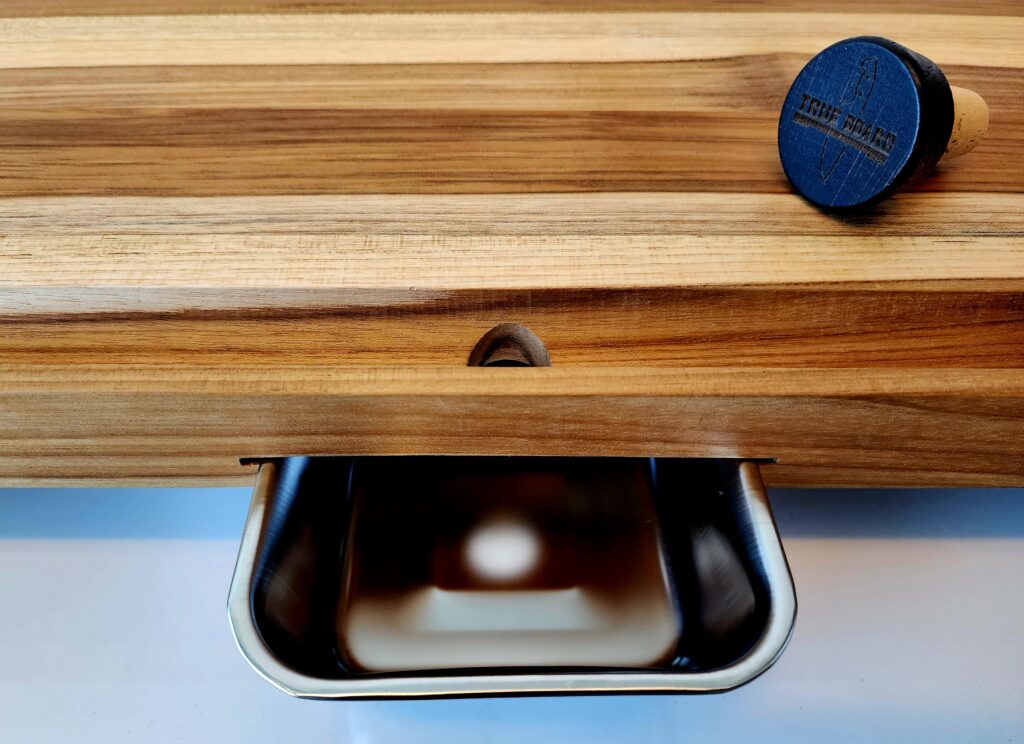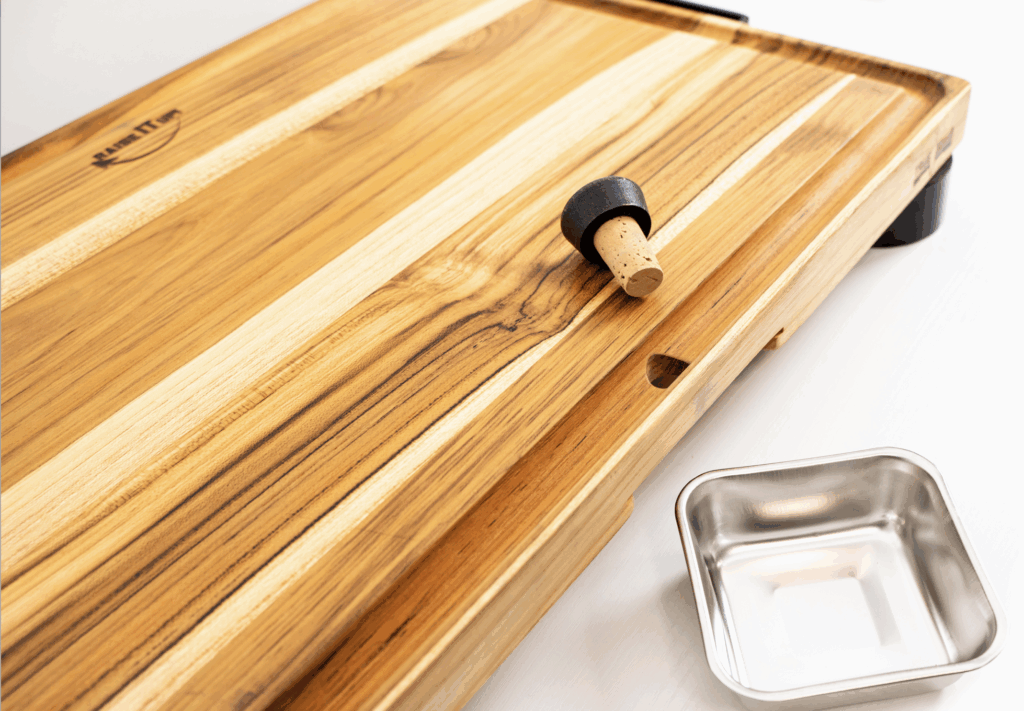
The Ultimate Guide to Choosing the Perfect Cutting Board: Wood vs. Plastic vs. Bamboo
Table of Contents
Categories
If there’s one tool every home cook and pro chef can’t live without, it’s a good cutting board. It’s where your meals begin — prepping fresh veggies, carving up a holiday roast, or plating a backyard BBQ feast. But picking the right cutting board can make a real difference in how you cook, how your knives hold up, and how safe your food prep is.
So, what’s best — wood, plastic, or bamboo? Let’s break it down.
🌳 Wood Cutting Boards: Classic, Durable, Chef-Approved
Ask any seasoned chef what they prefer — you’ll usually hear hardwood. Teak, maple, and walnut are favorites because they’re durable, naturally self-healing, and easy on knife edges.
Pros:
- Gentle on knives — keeps them sharper, longer.
- Long-lasting when properly cared for.
- Natural beauty — looks great for prep and serving.
- Naturally resists bacteria when cleaned and oiled regularly.
Cons:
- Needs regular oiling.
- Can’t go in the dishwasher.
- Slightly heavier than other boards.
🧴 Plastic Cutting Boards: Cheap & Easy — But Disposable
Plastic cutting boards are everywhere. They’re affordable, lightweight, and dishwasher safe, which makes them popular for handling raw meat.
Pros:
- Inexpensive and easy to replace.
- Dishwasher-friendly.
- Lightweight and easy to store.
Cons:
- Grooves from knife cuts can trap bacteria.
- Dulls knife blades faster.
- Usually ends up in landfills — not great for the environment.
🎋 Bamboo Cutting Boards: Eco Buzzword — But Not Always Practical
Bamboo boards have become trendy as an “eco-friendly” option. Bamboo is technically a grass, grows quickly, and is renewable — but not all bamboo boards are created equal.
Pros:
- Renewable material.
- Harder than some woods — resists cuts.
- Affordable and lightweight.
Cons:
- Often too hard — can dull knives quickly.
- Cheaper boards may use questionable glues.
- Can crack or splinter if not properly cared for.
So, Which One Should You Choose?
When it comes to everyday use, only quality hardwood strikes the balance of performance, durability, and safety — and that’s why top chefs stick with it.
- Plastic? Handy as a backup for raw meats — but not for your daily prep.
- Bamboo? Better than plastic for sustainability — but too hard on knives.
- Hardwood? The clear winner for daily prep, presentation, and longevity.
That’s where The True Board comes in.
Why The True Board Is a Cut Above
At The True Board, we didn’t want just another cutting board. We wanted the best board — crafted from responsibly sourced teak, designed with real kitchen needs in mind. From its elevated design that keeps your counter dry, to its smart juice groove and stainless bowl for clean carving, The True Board is built to last and built to perform.

Good knives deserve a good board. Your meals deserve the best surface to start on. And you deserve a tool that turns meal prep into something you actually enjoy.
How to Care for a Quality Wood Board
Taking care of a premium board is easier than people think:
-
- Wash with mild soap and warm water.
- Wipe dry immediately and store standing up.
- Oil it every few weeks to keep it conditioned.
- Use both sides to extend its lifespan.
A few minutes of care means years of use.

Ready to Make the Right Choice?
A good meal starts with good prep — and the right board makes all the difference. Sure, plastic and bamboo have their place — but when you want a board you can trust for every chop, slice, and carve, hardwood wins every time.
Make it The True Board. Make it your best meal yet.
Explore The True Board ➜ TheTrueBoard.com

